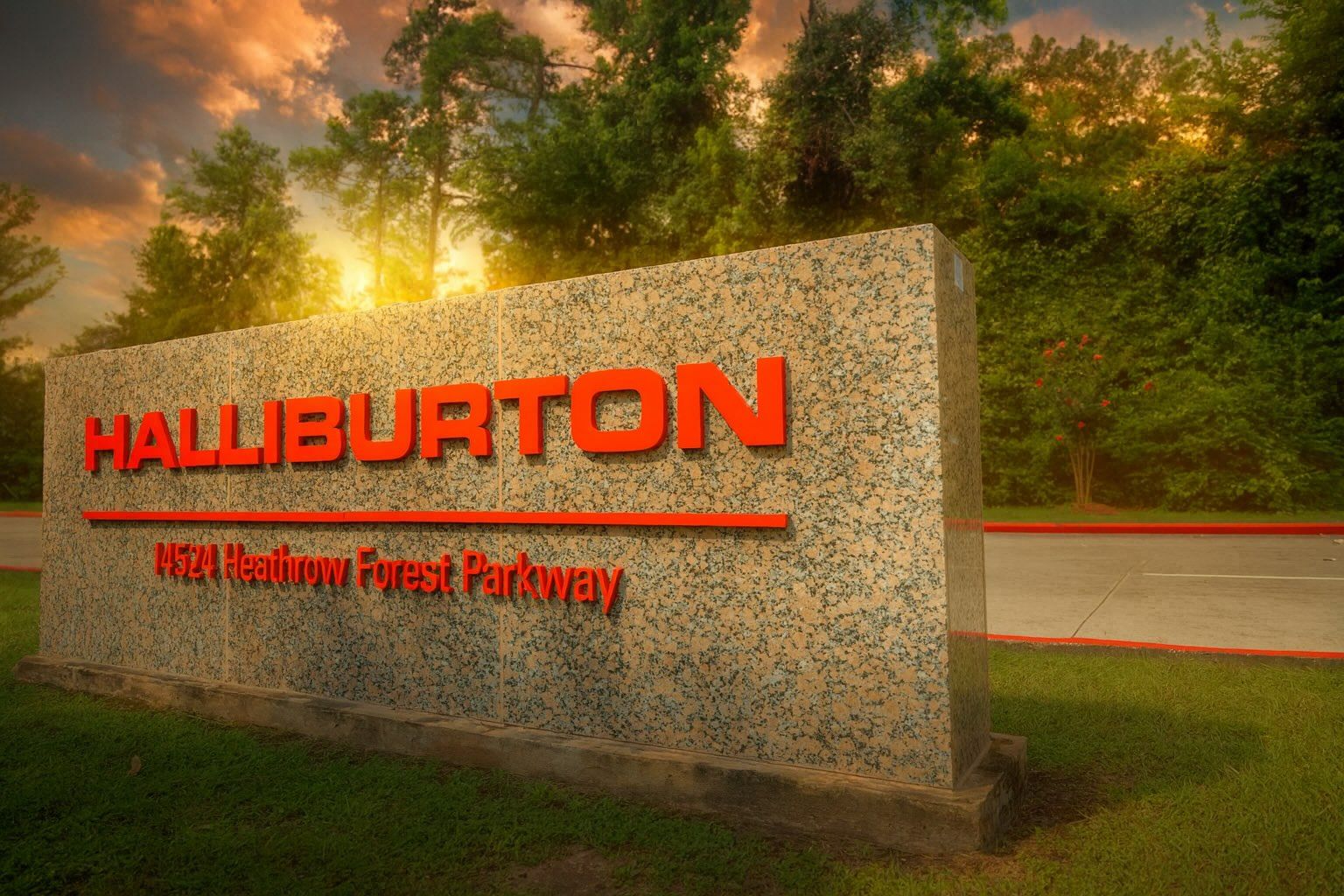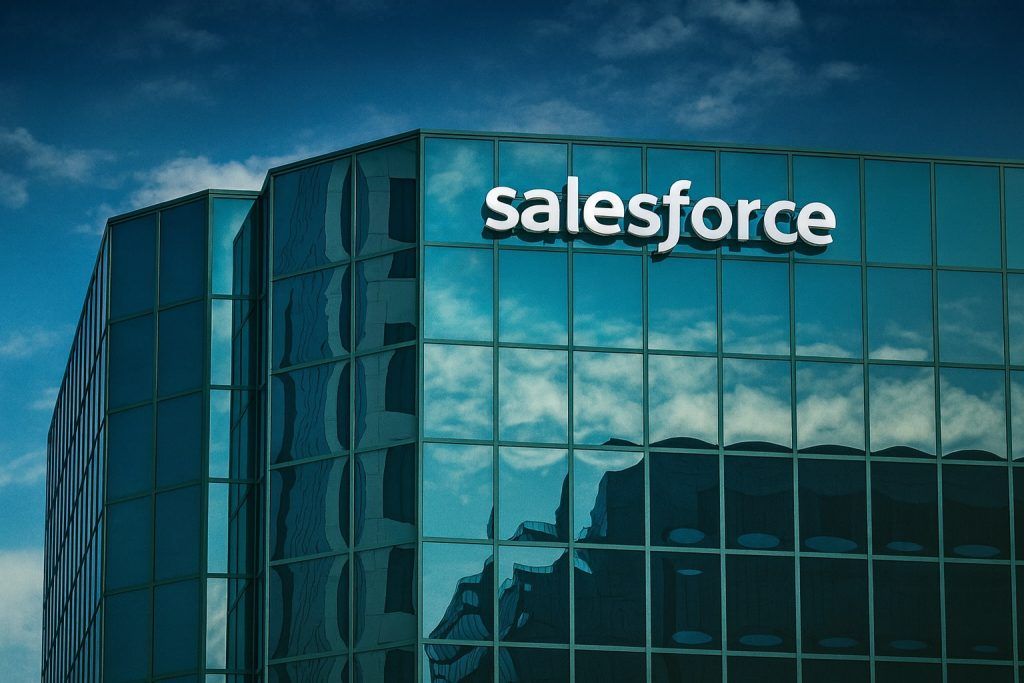- Stock Price (Oct 21, 2025): HAL traded around $24–$25 intraday, up about 9–10% on Oct 21 after its Q3 earnings beat [1] [2]. For context, HAL closed at ~$22.6 on Oct 20 and had dipped as low as $21.82 on Oct 16, so the jump on Oct 21 was a sharp reversal [3] [4].
- Recent Performance: In the week before earnings, HAL shares rose gradually (from $21.82 on Oct 16 to $22.62 on Oct 20) and then surged on the news. MarketBeat reports the stock “gapped up” to open at $24.57 on Oct 21, after closing $22.62 the day before [5].
- Q3 2025 Results: Halliburton reported adjusted EPS of $0.58 in Q3 vs. Street $0.50, and revenue of $5.6 billion vs. $5.39B expected [6]. (Reported net income was $18M, or $0.02/share, down from $472M in Q2.) On the quarter Halliburton delivered 13% adjusted operating margin and generated $276M free cash flow [7] [8].
- Dividend: The company declared a $0.17 quarterly dividend (≈2.8% yield) and spent about $250M on share repurchases in Q3 [9] [10].
- Analyst Sentiment: Analysts are cautiously upbeat. Recent research notes show price targets mostly in the mid-$20s: e.g. Stifel lowered its target to $27, while BofA and RBC raised theirs to $26 [11]. According to MarketBeat, HAL’s consensus rating is “Moderate Buy” with an average target around $30 [12] [13].
- Key News: Halliburton announced strategic moves in mid-Oct: a new VoltaGrid partnership to deploy distributed power systems for data centers (first projects in the Middle East) [14], and multi-year Petrobras deepwater contracts in Brazil (stimulation, intelligent completions, safety valves) [15]. CEO Jeff Miller highlighted these as signs of Halliburton’s focus on innovation, sustainable energy, and its strength in complex offshore projects [16] [17].
Strong Q3 Earnings Beat Expectations
Halliburton’s October 21 Q3 earnings release blew past analyst forecasts, reinvigorating the stock. The oilfield services firm earned just $0.02 per share (due to restructuring charges) but $0.58/share adjusted, beating the $0.50 consensus [18]. Third-quarter revenue was $5.60 billion, slightly above Wall Street’s $5.39B estimate [19]. CEO Jeff Miller underscored the quarter’s achievements: “We delivered total company revenue of $5.6 billion and adjusted operating margin of 13%. We also took steps that will deliver estimated savings of $100 million per quarter, reset our 2026 capital budget and idled equipment that no longer meets our return expectations,” he said [20]. These cost-cutting and efficiency measures were a major theme – the company has $400M in annual savings planned from streamlining.
The strong results were driven by steadier North American oilfield activity and equipment sales. Halliburton noted robust completion tool sales and well stimulation in the U.S. and Canada, which offset weak drilling in parts of the Middle East/Asia [21] [22]. (Note: Halliburton’s international revenue declined, reflecting soft demand in Saudi Arabia, Mexico and elsewhere [23] [24].) Still, management said its differentiated technology offerings (like SmartWell completions and digital services) are winning new work overseas [25] [26].
Investors cheered the results: HAL stock jumped about 5% in pre-market trading on Oct 21 and opened sharply higher [27] [28]. By late morning it was up roughly 9–10% [29]. Market reactions noted not only the earnings beat but also the company’s commitment to capital discipline and shareholder returns (dividends and buybacks) [30].
Stock Movement and Analyst Outlook
Even before earnings, Halliburton’s stock was on the rise (up ~5% over two trading days prior) as oil prices firmed. Then the Q3 news acted like a spark. MarketBeat reports HAL “gapped up” from ~$22.6 to $24.57 as markets opened Oct 21 [31]. By midday it was trading around $24.8 (nearly 10% higher) [32]. Volume spiked, signaling investor interest.
Analysts are now updating their views. Several firms recently tweaked price targets: Stifel Nicolaus trimmed its HAL target to $27 (from $29) but kept a Buy rating, while Bank of America and RBC raised targets to $26 [33]. Wells Fargo has an “overweight” rating with a $26 target, and Weiss Ratings recently put a Hold on HAL [34]. Overall, about 14 analysts rate HAL a Buy and 8 a Hold [35]. The consensus per MarketBeat is a “Moderate Buy” with an average target ~$30 [36] [37]. In short, analysts see upside from current levels but remain cautious given industry headwinds.
Market sentiment reflects both the beat and broader oil trends. Some investors see Halliburton as well-positioned if the energy upcycle resumes, while others note that drilling services are still in a downtrend (kept in check by low crude prices). “Our strategy of capital discipline, shareholder returns, and investment in differentiating technologies is paying off,” Miller stated [38], emphasizing that Halliburton is focusing on high-return projects and returning cash to shareholders.
Oil & Energy Sector Trends: Supply Pressures and Politics
Halliburton’s fortunes are tightly linked to oilfield spending, which in turn depends on oil prices and geopolitics. Right now, oil markets are turbulent. Prices are relatively low (Brent near $61/bbl on Oct 21, down from $73 in July) as global supply has surged and demand growth is tepid [39] [40]. For example, the IEA warns that crude output is set to climb ~3.0 million barrels/day in 2025 and another 2.4 mb/d in 2026, which could swell inventories to multi-year highs [41]. A Wedbush analysis echoes this, noting that “oilfield services companies such as Schlumberger, Halliburton… will likely experience reduced demand and pricing pressure for their services as producers cut back on drilling” amid a looming supply glut [42].
This oversupply situation is partly driven by record U.S. shale output (13.6 mb/d in July 2025) and a partial rollback of OPEC+ cuts [43] [44]. At the same time, global demand growth has softened (the IEA expects only ~0.7 mb/d growth next year) [45]. Geopolitical factors add mixed signals: trade tensions (U.S.-China), renewed Iran sanctions, and Middle East conflicts (Israel-Iran, Israel-Hamas) could tighten markets, but so far these have only caused brief price spikes. UBS analyst Giovanni Staunovo summarizes the mood: markets see the oil market “oversupplied but not in a glut,” predicting prices will “stabilize around current levels,” unless external shocks intervene [46].
In this environment, Halliburton and peers have kept costs under control. The company’s focus on efficiency – such as retiring old equipment and reducing capital spending – aims to maintain profitability even if dayrates for drilling remain under pressure. Investors will be watching the coming months to see if OPEC or economic surprises boost demand, or if oversupply persists.
Strategic Moves and Geopolitical Impact
Beyond quarterly results, Halliburton has been active strategically. On Oct 21 it announced a joint venture with VoltaGrid to deploy distributed power systems for data centers worldwide [47]. This initiative (starting in the Middle East) leverages Halliburton’s global infrastructure to deliver reliable, lower-emission energy – a sign of the company branching into new markets and supporting the boom in digital infrastructure. “The initiative underscores the company’s continued focus on operational innovation and sustainable energy delivery,” said Miller [48].
Earlier, on Oct 15 Halliburton won multiple deepwater contracts from Petrobras in Brazil [49]. These include using its SmartWell® completions in the giant Búzios field and advanced safety valves in Sépia and Atapu. Such wins (effective 2026) reinforce Halliburton’s role in big offshore projects and diversify its revenue. Halliburton noted it has over 60 years in Brazil’s oil sector, and these deals deepen its partnership with Petrobras [50].
Geopolitics also affects Halliburton’s outlook. For example, volatility in the Middle East can spur short-term drilling booms (as seen in some Gulf countries) or sudden slowdowns (if conflict intensifies). On Oct 20, Reuters reported that Middle East/Asia revenue fell 8% year-on-year in Q3 [51], reflecting cautious spending by regional producers. Halliburton’s future growth will partly depend on such regional dynamics and on energy-transition trends – hence its push into services like carbon capture, hydrogen, and digital energy management (not detailed here).
Analyst Forecasts and The Road Ahead
Looking forward, analysts have mixed but generally cautious expectations for HAL. Stockanalysis.com notes a “Strong Buy” consensus from 15 analysts with an average 12-month target of about $29.6 [52]. That figure (around 20% above current levels) suggests optimism that Halliburton can rebound if the oil cycle turns higher. However, by mid-Oct the official Street targets (mid-$20s) were lower than some earlier forecasts, reflecting near-term headwinds [53].
Some Wall Street voices are waiting for clearer signs. As one market analyst commented in the Reuters industry roundup, energy names like Halliburton need not only strong quarterly results but also firm forward guidance and margins to keep the rally going [54]. If oil demand picks up or OPEC curbs output, Halliburton could benefit from renewed drilling. But if oversupply drags prices down, rig counts and spending may stay depressed.
For now, the consensus is that HAL stock is a recovery play: it’s down ~25% from its late-2024 peak, so a lot of the bad news is already priced in. Its valuation (P/E ~11) is low by historical standards, and the company’s improved balance sheet (low debt, ample cash flow) provides a cushion. As one market commentary noted, Halliburton’s cost-control and share buybacks reflect a strategy to “Maximize Value” for shareholders [55] [56]. The key question is whether oil markets will stabilize or re-accelerate next year.
Sources: Company filings and releases [57] [58]; Reuters and financial news on HAL and oil prices [59] [60] [61]; MarketBeat and StockAnalysis for price data and analyst ratings [62] [63]; industry analyses (IEA, Wedbush) on oil-market trends [64] [65]; expert quotes as indicated.
References
1. www.marketbeat.com, 2. stockanalysis.com, 3. stockanalysis.com, 4. www.marketbeat.com, 5. www.marketbeat.com, 6. www.marketbeat.com, 7. www.halliburton.com, 8. www.marketscreener.com, 9. www.marketbeat.com, 10. www.marketscreener.com, 11. www.marketbeat.com, 12. www.marketbeat.com, 13. www.marketbeat.com, 14. www.worldoil.com, 15. egyptoil-gas.com, 16. www.worldoil.com, 17. egyptoil-gas.com, 18. www.marketbeat.com, 19. www.marketbeat.com, 20. www.marketscreener.com, 21. www.reuters.com, 22. www.marketscreener.com, 23. www.reuters.com, 24. egyptoil-gas.com, 25. www.halliburton.com, 26. egyptoil-gas.com, 27. www.reuters.com, 28. www.marketbeat.com, 29. stockanalysis.com, 30. www.marketscreener.com, 31. www.marketbeat.com, 32. stockanalysis.com, 33. www.marketbeat.com, 34. www.marketbeat.com, 35. www.marketbeat.com, 36. www.marketbeat.com, 37. www.marketbeat.com, 38. www.marketscreener.com, 39. www.reuters.com, 40. www.iea.org, 41. www.iea.org, 42. markets.financialcontent.com, 43. www.iea.org, 44. markets.financialcontent.com, 45. www.iea.org, 46. www.reuters.com, 47. www.worldoil.com, 48. www.worldoil.com, 49. egyptoil-gas.com, 50. egyptoil-gas.com, 51. www.reuters.com, 52. stockanalysis.com, 53. www.marketbeat.com, 54. www.reuters.com, 55. www.halliburton.com, 56. www.marketscreener.com, 57. www.halliburton.com, 58. egyptoil-gas.com, 59. www.reuters.com, 60. www.reuters.com, 61. www.reuters.com, 62. www.marketbeat.com, 63. www.marketbeat.com, 64. www.iea.org, 65. markets.financialcontent.com










